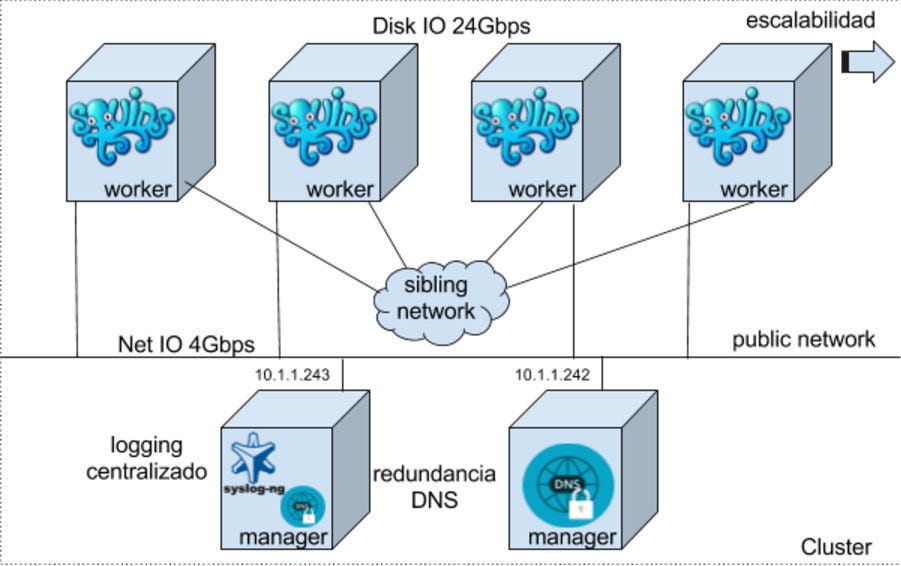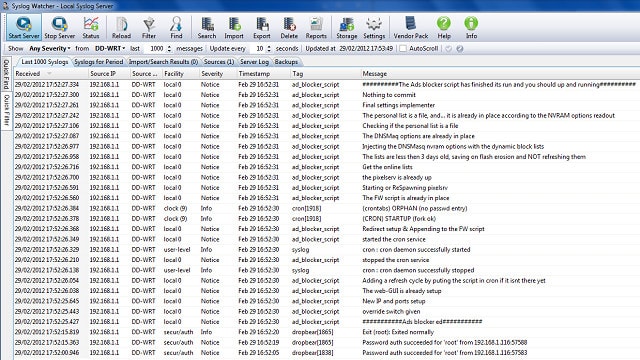
- Docker syslog ng how to#
- Docker syslog ng install#
- Docker syslog ng software#
- Docker syslog ng download#
- Docker syslog ng windows#
Within the Syslog-ng container, there is a file /var/log/messages that stores any syslog messages that the container receives. It will generate an email for every log message match, which means you should always be highly selective here.I have a container running Syslog-ng and I’m trying to feed syslog messages to Splunk. With it, you can send messages to email instead of or in addition to files. Smtp() is the mail destination for syslog-ng. Now you’ll add a new destination to your syslog-ng configuration and test it. Sep 7 11:32:40 hala egoebelbecker: This is a test. You’ll see a message with your login name and the test log message.
Docker syslog ng how to#
If not, check your distribution’s documentation for instructions on how to add it. This tool is probably already installed on your system. You’re going to use the logger utility to verify your syslog-ng configuration. 3.13 SourceĪ few lines down, you’ll see a source declaration like this: source s_src Ī log combines a source, filter, and destination. Your version may be different, but we’ll be covering features from version 3.13 and up. The first line of your configuration must have a version declaration. Your syslog-ng package should have come with a basic configuration file that already performs basic system logging. Finally, we’ll briefly cover how to send messages to SolarWinds Loggly. Let’s start by setting up a syslog-ng daemon to log to a file. So, let’s pick a few simple ones to illustrate how to configure this powerful logging tool.

What Do You Want To Do?Īs discussed above, the capabilities of syslog-ng are far too extensive to go through in a single blog post. We’ll go over the file structure as we review a few different configuration options. The config file syntax is specific to syslog-ng but should look familiar to most programmers. You can edit the file with your favorite text editor. On most distributions you’ll find it in the /etc/syslog-ng/ directory. Syslog-ng ConfigurationĬonfiguring syslog-ng is simple. Once it’s installed, you’re ready to move on to configuring syslog-ng.
Docker syslog ng install#
The same syslog-ng daemon acts as a client, server, or both, so you don’t need to install different packages.įollow the instructions for your operating system to install the syslog-ng daemon.
Docker syslog ng windows#
Unfortunately, the only official releases for Windows are distributed as part of the commercial product.
Docker syslog ng download#
You can download install packages for all the major Linux, Unix, and MacOS releases here. We’ll cover the open-source edition in this tutorial. Syslog-ng is available both as an open-source product and a commercial product.


Docker syslog ng software#
Each log message has a code indicating the software type generating the message, a severity level, a timestamp and the actual message. Syslog-ng messages can be stored to local disk, forwarded to another login daemon, or both. We’ll cover how to install, configure, and test syslog-ng on your Linux system.Īfter you configure and test a basic setup, you’ll add a new logging destination and test it. In this post, you’ll learn the basics of syslog-ng configuration. It provides logical separation between applications and their log messages, so they can simply “fire and forget” log messages to a centralized process for reporting, analysis, and storage. Syslog-ng is a system logging application.


 0 kommentar(er)
0 kommentar(er)
